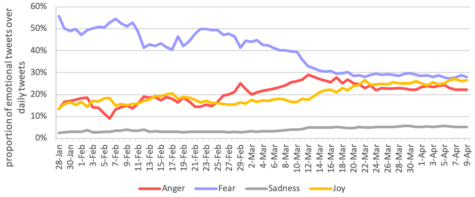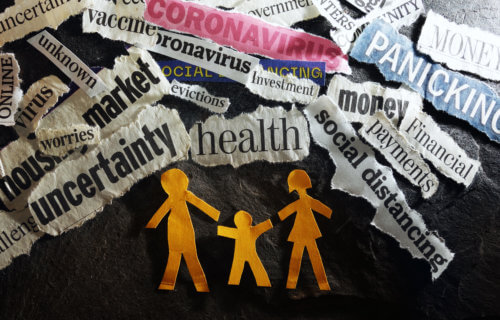SINGAPORE — For many people stuck in lockdown, social media is their best outlet for staying in contact with the world. As the coronavirus pandemic continues to spread, fear of the illness remains high. Unfortunately, a new study finds that fear is turning into anger as the global community anxiously waits for a cure.
Researchers at Nanyang Technological University are studying the shift in emotions being expressed on Twitter during the pandemic. Their analysis of more than 20 million tweets finds nearly 60 percent of online reaction expressed fear and uncertainty about the virus in January amid the start of the pandemic.
Since then, fearful tweets continue to drop while messages expressing anger are on the rise. The study in JMIR Public Health & Surveillance adds angry coronavirus posts made up nearly 30 percent of Twitter reaction on March 12. That is the same day the World Health Organization officially declared COVID-19 a global pandemic.
Quarantine is getting on people’s nerves
 The NTU team says this shift reflects growing frustration with national quarantines; as people express anger over their isolation and social seclusion. Governments must do a better job of communicating with the public to keep these frustrations from boiling over.
The NTU team says this shift reflects growing frustration with national quarantines; as people express anger over their isolation and social seclusion. Governments must do a better job of communicating with the public to keep these frustrations from boiling over.
“The rapid evolution of global COVID-19 sentiments within a short period of time points to a need to address increasingly volatile emotions through strategic communication by government and health authorities, as well as responsible behavior by netizens before they give rise to ‘unintended outcomes,'” Professor May O. Lwin says in a university release.
Lwin suggests not addressing the public’s anger can lead to growing mistrust of how officials are handling the emergency. Belief in false news reports found online is also likely to rise, hindering global recovery efforts.
COVID-19 & emotional keywords
The NTU study tracks tweets including four basic keywords: Wuhan, corona, nCov, and covid. It then categorizes them according to the emotions they display — either anger, fear, joy, or sadness.
Lwin says the tweets early in the pandemic, mostly expressing fear, commonly mention a “first case” and “outbreak.” Many of the early tweets also express a feeling of xenophobia, using the words “racist” and “Chinese people.”
As the outbreak intensified in March, social media reaction transformed into unrest regarding the shortages in antibody tests and medical supplies. The tweets also express strong feelings about the rising death toll, using phrases like “test shortages,” “stay home,” and “uncounted,” and many swear words.
“Although the data looks at only public tweets surrounding the four selected keywords, the results are sufficient to start a conversation about possible issues arising from the pandemic at present,” the professor at NTU’s Wee Kim Wee School of Communication and Information explains.
Signs of joy, a ray of hope
Although researchers say over a fifth of tweets about COVID-19 are now angry ones, they note that feelings of joy and gratitude are also rising.
The analysis reveals tweets expressing joy have nearly equaled fearful tweets as of May. These social media users are talking about national pride and community spirit. They use words like “good news” and “feel good” as more people recover from the illness. In Singapore, the study finds many of these comments revolve around resilience to COVID-19 and celebrating heroic or kind acts.
The study authors plan to follow up by looking at emotional trends in specific countries.
Like studies? Follow us on Facebook!
